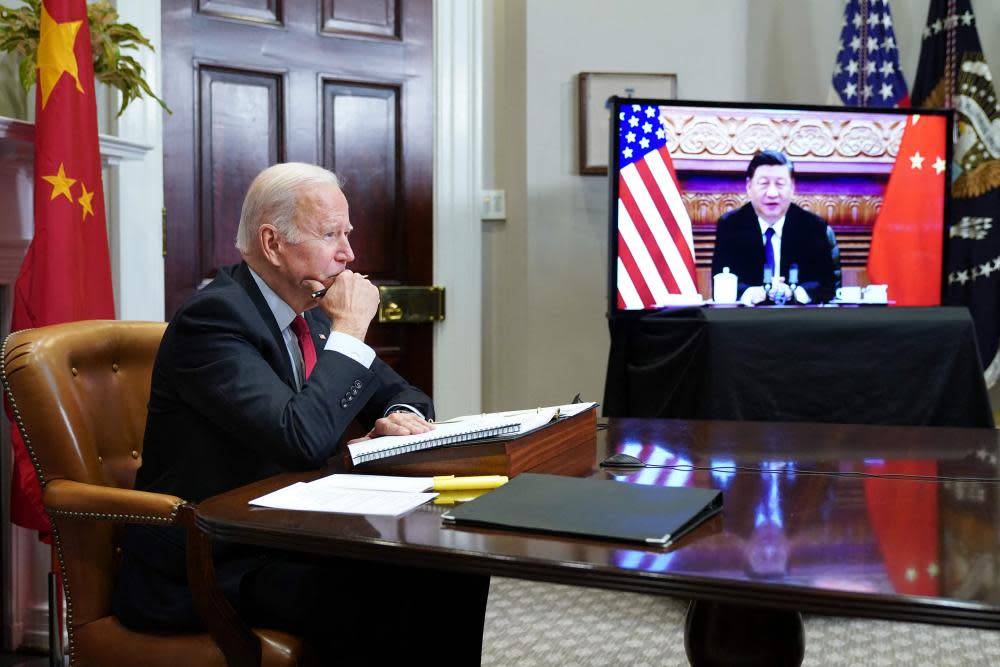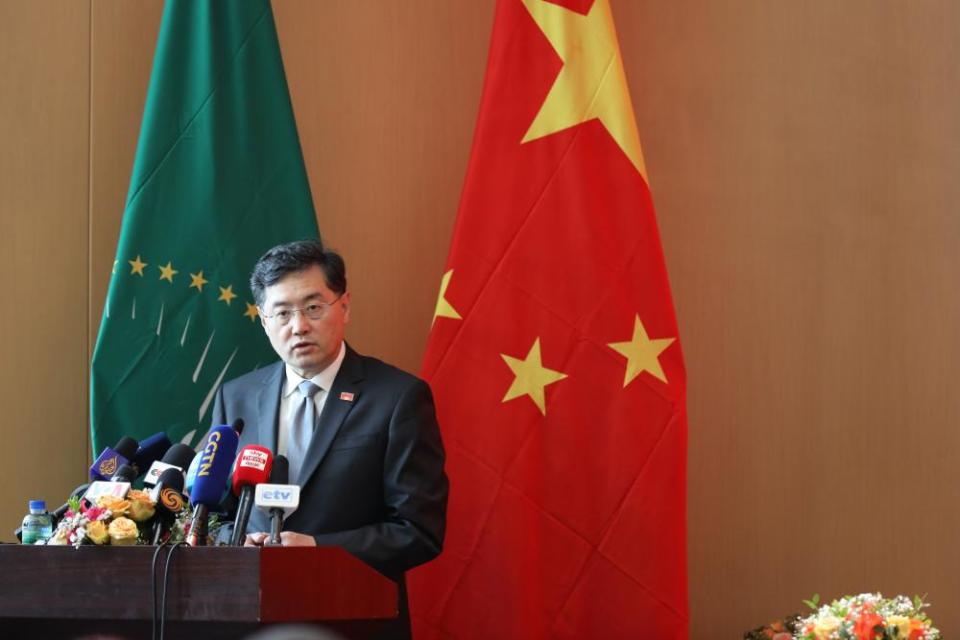Competitor or adversary? The west struggles to define its relationship with Beijing

If you want to solve a problem, it helps to be able to define it, but when it comes to a problem like China, western leaders have been struggling to find the right words.
Liz Truss sought to designate China as a “threat” to Britain, but did not stay prime minister long enough for that to become established policy. Her successor, Rishi Sunak, has opted for the less combative “systemic challenge” but he is under pressure from backbench MPs to follow Truss’s path and call Beijing a “strategic threat”.
Sunak has made clear he does not want the UK to be out of step with its allies on the issue, most importantly the US. In Washington, meanwhile, China designation is a delicate and evolving art.
Related: China ‘spy balloon’ wakes up world to new era of war at edge of space
The delicacy was apparent when a Chinese balloon sailed over the continental US earlier this month. The US declared the high-altitude airship and its payload to be designed for spying and shot it down once it was safely over the Atlantic. The secretary of state, Antony Blinken, cancelled a long-planned trip to Beijing to address bilateral tensions, but at the same time stressed that channels of communication would be kept open and that the US remained keen on a meeting when conditions allowed. Blinken may meet his counterpart, Wang Yi, as soon as this week, at the Munich security conference.
The theme of US-China policy towards the end of the Trump administration was an all-encompassing decoupling, in which China was presented in mostly adversarial terms. Joe Biden has preferred to talk about “stiff competition”. His administration’s national defence strategy paper deemed Russia to be an “acute threat” while China was portrayed as the US’s only long-term “competitor”. In recent weeks, the official catchphrase for Beijing has been the slightly nebulous “pacing challenge”, suggesting the US is the world’s constant frontrunner with China ever closer to its shoulder.
The problem with categorising China is that there are multiple aspects to its global role as it expands its presence on the world stage. For that reason, Democratic senator Chris Murphy has warned against digging up old cold war rhetoric.
“You can’t use the terminology that we used for our conflict with the Soviet Union for our conflict with China,” Murphy told Foreign Policy. “It is apples and oranges. We had virtually no trade relationship with the Soviet Union. Our most vital trade relationship is with China. So I do worry about a bunch of Cold Warriors and Cold War enthusiasts thinking that you can run a competition with China like you ran a competition with the Soviet Union. It’s not the same thing.”

With this in mind, Blinken has adopted a Swiss army penknife multi-tooled approach that is “competitive when it should be, collaborative when it can be and adversarial when it must be.”
Washington is acutely aware that it has been complacent in its competition with China for global clout, having assumed that better US technology and its democratic model would win the day, only to find that African countries and other parts of the global south were sitting on their hands when the US called for support in the UN general assembly. Last year an old Pacific ally, Solomon Islands, signed a security pact with Beijing, denying entry to a US Coast Guard cutter not long after.
The Biden administration now plans to beef up its diplomatic presence in the Pacific, reopening some shuttered missions. It has set up a “China house” in the state department to coordinate analysis and help counter China’s message around the world. On Wednesday, the deputy secretary of state, Wendy Sherman, summed up the new US approach as Washington takes on the People’s Republic of China (PRC) in the contest for hearts and minds in emerging economies.
“It is not to say that the PRC can’t invest or that you should toss them out,” Sherman said at the Brookings Institution. Instead, she said the message will be: “Have your eyes wide open”.
“Understand what you’re getting, understand what rules apply, what the norms are. Give us a chance, see what we have to offer. Let us compete and help you develop as a country in the ways that you choose,” Sherman said.
As for collaboration with China, she said there was little choice other than to work with Beijing to address the climate emergency.
There is no doubt that we cannot meet the climate challenge without engagement with the PRC
US deputy secretary of state Wendy Sherman
“There is no doubt that we cannot meet the climate challenge without engagement with the PRC,” Sherman said. “It’s just not possible because we are both such large emitters and historic emitters.”
At the same time, there are plenty of fields in which the US and China are adversaries. The balloon affair has just added another layer to a constant, escalating intelligence struggle between the two powers, in which Beijing has scored some remarkable successes in recent years, stealing designs for the F-35 fighter jet for example. Chinese hackers also stole the personal details of 22 million federal workers – current, former and prospective.
Fears of China’s technological capabilities led Biden to introduce draconian export restrictions on semiconductors in October of last year, in an effort to strangle China’s microchip sector. It came close to an economic declaration of war, but Republicans in Congress are still trying to depict him as “soft on China”, calling on him to ban the TikTok app as a threat to national security. Some red states are considering bans on Chinese nationals buying land.
It is in the military arena of course where the stakes are the highest and the risks of a competitive relationship becoming adversarial are greatest. Last week, the Pentagon informed Congress that China now had more missile silos than the US. It was an eye-catching claim, though most of the silos are empty and the US retains a substantial superiority in submarine and airborne launchers. China is estimated by the Federation of American Scientists to have 350 nuclear warheads. Even if that number tripled, as the Pentagon predicts it will, it will still be less than a fifth of the US stockpile.
China’s long-term threat will depend ultimately on whether it is developing its military clout simply to deter or to attack, across the Taiwan Strait in particular. At the end of January, the head of US Air Mobility Command, Gen Mike Minihan, told other officers that his “gut” told him the US and China would be at war by 2025. It was an estimate quickly disowned by the rest of the Pentagon leadership, who shied away from such expressions of inevitability.
US officials say that Xi Jinping is watching Russia’s military debacle in Ukraine with concern and maybe recalibrating his options. Opinions differ within the administration on how seriously Xi takes his pledge to reunite China, another reason it has wavered over the right terminology.
There is agreement for now however that repeatedly deeming China to be a threat risks making matters worse, shaping policy in such a way that it becomes a self-fulfilling prophecy.

 Yahoo News
Yahoo News 
